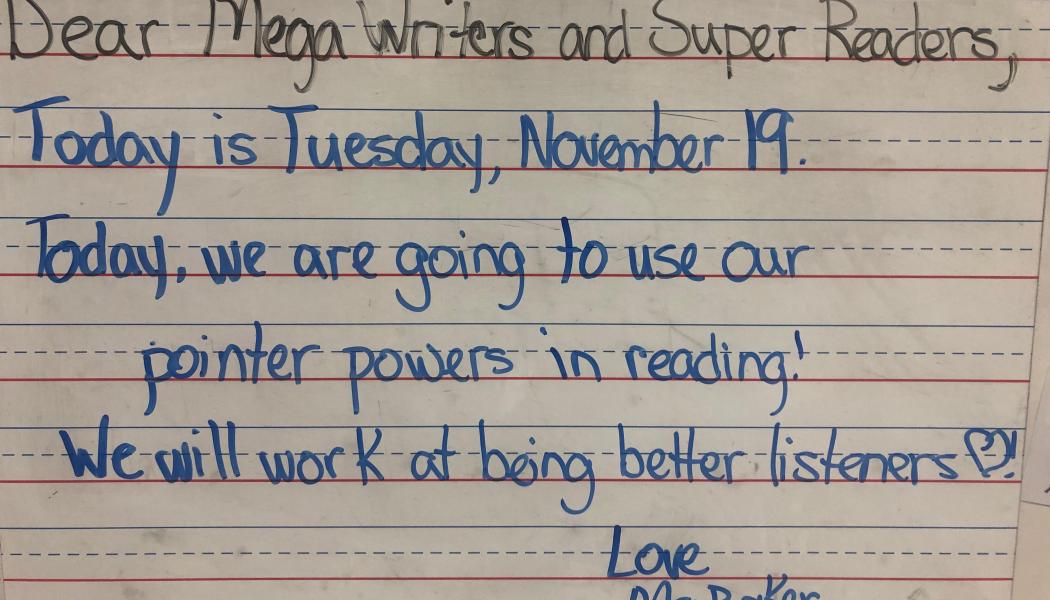Teaching Through the Morning Message

Join Our Community
Access this resource now. Get up to three resources every month for free.
Choose from thousands of articles, lessons, guides, videos, and printables.
A morning message is typically a greeting written to students by their teacher, and read together as a class. Spending five minutes daily on a morning message lesson is a great way to incorporate reading, writing, word study, and concepts of print. Morning messages can be rich in content and fun for students, and can set the tone for the day.
What can be taught in a morning message?
- Vocabulary
- Sentence structure
- Sight words
- Content
- Schedule considerations
From kindergarten to sixth grade, we have the ability to apply many teaching points as we read through the message together each day.
- “Dear [Class, Students, Children, Readers, etc.]” Look carefully at letters and words, listen carefully to sounds, and saying the word slowly help us determine the word written to fill in the blank.
- Sight word recognition with frequent use of common words such as we, to, the, go, will, and, a.
- We access concepts of print by knowing where to start the sentence, that we place spaces between our words, that we end our sentence with punctuation, and more.
- We tune in to interesting words because we are intentional with word choice. For example, “Today will be a [great, fantastic, marvelous, terrific, etc.] day!”
- We work on fluency as we read accurately, with expression, and at a rate that matches the text.
- Comprehension strategies are practiced through rich sentences, some of them from previously taught content. For example, “Yesterday we learned that most of the earth’s volcanoes are around the Pacific Ocean because that is where most of the earth’s subduction zones are found.”
Morning messages are a great way to teach through the instructional practices of modeling, think-aloud, and explicit explanation. Adjust the content of your message and the purpose of instruction to match your students’ age and developmental readiness, and experience the rich teaching and learning that results.





